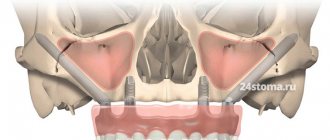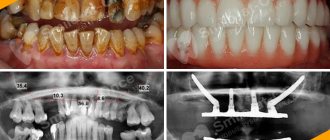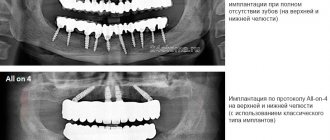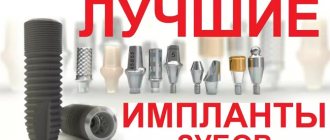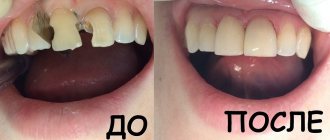Tax deduction for dental prosthetics: what is it?
The tax deduction for dental treatment and prosthetics is 13% of the total cost of dental services provided. The indicated amount should not exceed the amount of transferred income tax for one year in which the treatment was carried out. The limit on the amount to be refunded is 120,000 rubles.
You can take advantage of the opportunity to receive a social deduction annually within the specified limit. The taxpayer has the right to partial reimbursement of both his own medical expenses and those of close relatives.
Is dental implantation an expensive treatment?
The cost of installing implants is affected by:
- Clinic category . In large dentistry with a large flow of patients, there is competition, so the cost of services may be lower than in small institutions. In Moscow and St. Petersburg, taxes and the cost of renting premises are higher, so prices for services are several times higher than in the provinces.
- Doctor's qualifications . Attending seminars and advanced training courses is expensive, so treatment from an experienced doctor will be more expensive. The availability of permits will also affect the cost. Registration and updating of documentation requires financial investments.
- Applied technology of implantation:
- classic in 2 stages;
- basal;
- express method;
- laser;
- mini-implantation.
In addition to the dental implant and superstructures, diagnostic procedures, consumables and repeated surgical interventions are paid for.
Under what conditions is the deduction granted?
In order to return part of the paid funds, a number of mandatory conditions must be met:
- having a permanent official job with personal income tax payment in the amount of 13% of the monthly salary;
- payment was made at your own expense or with the help of relatives;
- dentistry has a license giving the right to carry out certain work;
- the statute of limitations for undergoing therapy does not exceed three years;
- Documents confirming payment (receipts, contracts) have been saved.
You can apply for a tax deduction for dental prosthetics within 3 years from the date of treatment.
What does the final price consist of?
The final cost of implantation depends on the costs at each stage:
- The preparatory stage includes sanitation of the oral cavity, consultations with specialists, and collection of samples.
- The diagnostic stage involves an orthopantomogram and computed tomography.
- If there is insufficient bone tissue, directed regeneration, sinus lifting or bone block grafting is performed.
- Surgical stage. The doctor forms a bone bed, screws in the implant and sutures the mucous membrane.
- After 3-5 months, the gum former is installed. To do this, the doctor dissects the mucosa, removes the temporary plug, and installs the former.
- After 2-3 weeks, when a cushion of gum tissue forms, the former is removed and an abutment is installed in its place.
- Prosthetics. Impressions are taken from the jaws, from which artificial crowns will be created in a dental laboratory.
- Fitting, correction, fixation of the structure in the oral cavity.
- Rehabilitation. The patient regularly visits the dentist to monitor the functionality of the prosthesis and the condition of the tissues.
The procedure for filing a deduction for dental prosthetics
There are two ways to reimburse funds: the Federal Tax Service at the place of registration or by the employer. The first option involves transferring funds to your personal account one-time in full. The second is receiving a salary without deducting personal income tax within the deduction amount.
Registration procedure
- It is necessary to keep the contract and receipts for payment, including diagnostics, therapy, and production of prostheses.
- After a year, contact a medical institution and request a certificate of a certain form.
- Fill out a declaration of income, where you indicate the right to a refund.
- Send the declaration and package of documents to the Federal Tax Service at the place of registration;
- Wait for the results of the desk audit within three months.
- To receive funds, write an application indicating account details for the tax service or provide a document to the employer.
You can file an income declaration yourself on the inspection website www.nalog.ru, as well as in the taxpayer’s individual account. There you can track the progress of the desk audit and decisions on payments.
Why are dental implants so expensive?
There are now more than 300 brands of dental implants. Production, research and development and materials require high costs, so products cannot be cheap. Important indicators in the manufacture of implantation systems:
- Material . Typically, artificial roots are made from titanium alloy Ti-6Al-4V, which contains a small amount of aluminum and vanadium. Impurities give titanium strength, but slow down osseointegration (the process of fusion of the implant with the jaw bone). Manufacturers of premium structures use pure titanium 4 (G4Ti), which does not contain impurities. Metal-free ceramics and an alloy of zirconium dioxide with titanium are also used as materials. Ceramic rods are suitable for people with diseases of the mucous membrane and allergic reactions to metal.
- Surface type . The implant surface is an important factor responsible for the rate of osseointegration. Basic surface treatment consists of sandblasting with titanium oxide or alumina and acid etching. This technology has the international name SLA and provides a rough, porous surface. After treatment, the surface can be coated with various chemical compounds that accelerate the synthesis of bone tissue. These compounds include calcium phosphate, fluoride ions and phosphorus.
- Implant shape and thread types . When choosing an implant, the shape and type of thread are essential. Each model interacts with the jawbone differently. There are 4 types of bone: D1, D2, D3 and D4. D1 is the densest type, D4 is the softest. High-density bone provides good primary stability but has fewer blood vessels, so osseointegration will occur more slowly. The softest type D4 is a poor option for implantation. The most favorable bone types are D2, D3.
For dense bone, cylindrical and conical implants are suitable. Too coarse carving is contraindicated in this case, since high tension in the bone will promote atrophy. It is good when the microthread is cut in the neck of the rod, and in its lower part the thread is moderately pronounced. For soft types of bone, conical-shaped structures with self-tapping threads are suitable.
The dental system is selected depending on the density and volume of the alveolar process of the jaw, the place of implantation (aesthetic or chewing zone), and the method of prosthetics.
Required documents
To receive a refund, you must collect and correctly complete a package of documentation. To receive a tax deduction for dental treatment and prosthetics you will need the following:
- certificate of payment for dental services in an approved form;
- cash receipts confirming payment made;
- 2NDFL certificate from the employer;
- income declaration 3NDFL;
- agreement with dentistry;
- duplicate license for medical procedures.
What you can and cannot save on during treatment
The professionalism of the doctor and the quality of the materials used are directly dependent on the pricing features of the clinic. List of acceptable ways to save:
- Buy health insurance. Sometimes clinics provide discounts to patients who are treated under insurance programs.
- You can refuse a temporary artificial crown if the chewing area is being prosthetized.
- Perform implantation on several teeth at the same time. This will help save on making impressions, anesthesia and x-rays.
Tax deduction for pensioners
The main condition for a refund is payment of income tax. Many pensioners do not have additional sources of money other than pension payments. The law outlines the conditions for processing social deductions for persons of retirement age.
The right to a refund exists if the pensioner:
- continues to work and make tax deductions;
- there are working relatives (spouse, children, brothers, sisters) who will be able to accept a tax deduction for dental prosthetics;
- receives income from other sources and pays taxes.
How do cheap ones differ from expensive ones?
Conventionally, dental implants can be divided into three large groups:
- Premium systems from leading companies. In addition to the production of rods and suprastructures, such companies invest a lot of money in development, histological research, and testing. They create training programs for dentists and continuously improve production technology. Ultimately, this is reflected in the cost, which is quite justified. Such designs include Swedish Astra Tech, German XiVe Friadent, Swiss brands Straumann and Nobel Biocare.
- Mid-segment designs . The second group includes companies that do not make a significant contribution to the development of implantology, but simply repeat the developments of manufacturers of the first group. It is not always possible to recreate an exact copy, so some samples are not entirely successful. However, there are models that, in the capable hands of a surgeon, can last a long period. These brands include the Israeli Alpha Bio and MIS, the American Bicon and the German Ankylos.
- Designs with low functional capabilities . Models in this category are manufactured at small budget enterprises. Such dental systems include Belarusian, Russian and Ukrainian.
Failure Cases
The Federal Tax Service has the right to refuse a tax deduction in the following cases:
- insufficient package of documents, there is no confirmation of the right to receive benefits;
- payment was made by a person who is not a relative of the taxpayer;
- a tax refund for the taxable year was received earlier;
- submitting documents for a child over 18 years of age;
- critical errors when filling out the declaration;
- The dentist's license has been revoked;
- therapy was carried out outside the country;
- the employer did not provide a tax report;
- a package of documents was sent to the Federal Tax Service not at the place of registration.
In case of refusal, the inspection sends information to the applicant and explains the reason. It is necessary to make the appropriate changes and provide the missing documents, then apply for a tax refund again. If the taxpayer does not agree with the refusal, he can challenge the decision of the Federal Tax Service within a year. Repeated denial of social opportunity becomes the reason for filing an application to court.
Average cost in Moscow
| Name | Cost, rub. |
| Turnkey implantation | |
| Classic with installation of a metal-ceramic crown | 40000 |
| Classic with installation of a zirconium crown | 55000 |
| Implant supported dentures | |
| Removable for one jaw | 100900 |
| Clasp 2-sided | 180000 |
| Other operations | |
| Implantation of osteoconductive material in the area of 1 tooth | 9600 |
| Protective membrane 1 tooth | 12700 |
Expensive dentistry
The most popular question is what dental service is considered an expensive treatment? Is it possible to get a tax deduction for all expenses for prosthetics, braces or dental treatment?
Let's turn to the Decree of the Government of the Russian Federation of April 8, 2020 No. 458, which defines a list of expensive types of treatment.
It contains point 1:
Medical services for orthopedic treatment of the population with congenital and acquired defects of teeth, dentition, alveolar processes, jaws supported by dental implants in the absence of conditions for traditional dental prosthetics (significant atrophy or defects of the inert tissue of the jaws).
This is the only indication of a service that can be classified as dentistry. Or rather, to surgical dentistry for implantation of dentures.
Have a question or need to fill out 3-NDFL - we will help you!
To get a consultation
Let's summarize: no matter how much money you spend on prosthetics, installation of braces or dental treatment, only the operation of implanting dentures is an expensive type of treatment . And only for it and for the implants you can get a tax deduction for the entire amount.
All other dental services are classified as simple treatment with code No. 1 with a maximum tax deduction of 120 thousand rubles and a payment of 15.6 thousand rubles (13% x 120 thousand rubles).
Remember that the amount of all social deductions, including treatment, cannot exceed 120 thousand rubles.
Find out what documents need to be submitted in your case!
To get a consultation
Are all costs included in this amount?
No, not all. A tax deduction is provided for diagnostic and therapeutic procedures and consumables, but its amount does not include the cost of orthodontic structures. Therefore, the clinic usually breaks the cost of treatment into separate components.
For example:
- Therapeutic dental treatment.
- Implant installation. The deductible amount includes: the initial doctor’s appointment and the taking of a diagnostic image, treatment planning and the operation to install it, repeat appointments, crown installation.
- Correction of bite with braces: diagnosis, installation of the system, techniques during treatment and activation, replacement of the arch, removal - are included in the deductible amount, but the cost of the system itself and its components is not.
- When treating with aligners, a deduction is also applied to the amount of the doctor’s work.
How to calculate the amount to be refunded
You can return 13% of the amount. For example, you spent 100,000 rubles on treatment. This means that 13,000 rubles will be returned to you from the budget. If the treatment was paid for in parts, in installments, you can wait until it is completed and apply for a deduction for the entire amount at once.
If you spent 200,000 rubles, but the treatment is not included in the list of expensive ones, then you can return only 15,600 rubles. (13% of RUB 120,000).
If you spent 500,000 rubles. for expensive treatment, but you earned only 400,000 rubles in the reporting year, you can still return all 13%, that is, 65,000 rubles, but in parts. First, the paid income from 400,000 rubles will be returned. – 52,000 rub. Next year it will be possible to submit a new declaration and return the balance - 13,000 rubles.
You can get your money back not only for your treatment, but also for your children.
For whom can you get a deduction?
A common situation is when one person in a family is treated, and the other pays for it. This often happens to elderly parents, because paying tens of thousands of rubles for joint surgery or therapy for a serious illness is an unbearable burden for a pensioner.
In Art. 219 of the Tax Code of the Russian Federation defines a list of relatives for whom you can receive a tax deduction if you paid for their treatment:
- husband wife;
- children under 18 years of age;
- parents.
If you are paying for yourself or for relatives from the above list, an agreement with the clinic can be concluded for any of you. The main condition is that there must be documentary evidence that it was you who incurred these expenses.
Place your order and we will fill out the 3-NDFL declaration for you!
Order a declaration
How to get a deduction for treatment
The process of applying for a tax deduction for expensive treatment is no different from the general rules. The main thing is attentiveness, scrupulous collection of documents and correct filling out of the 3-NDFL declaration.
On the one hand, nothing complicated. On the other hand, even a minor mistake can lead to you having to start all over again. Considering that tax authorities take three months for a desk audit, incorrectly completed documents will stop the process and you will waste time.
What will you get if you register in the online service NDFLka.ru:
- We will compile for you a list of documents you need;
- We will check the correctness of the design;
- We will fill out the 3-NDFL declaration for you or help you do it yourself;
- We will send you two electronic formats of 3-NDFL: XML and PDF, so that it is convenient for you to submit the declaration to the Federal Tax Service;
- or we will send 3-NDFL to the tax office ourselves using your electronic signature;
- We will be in touch until you receive the money in your bank account.
